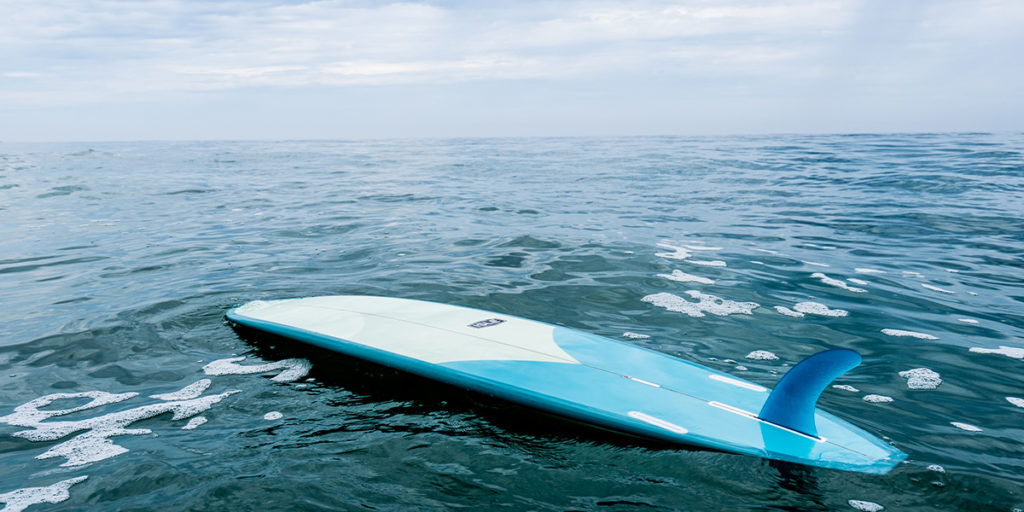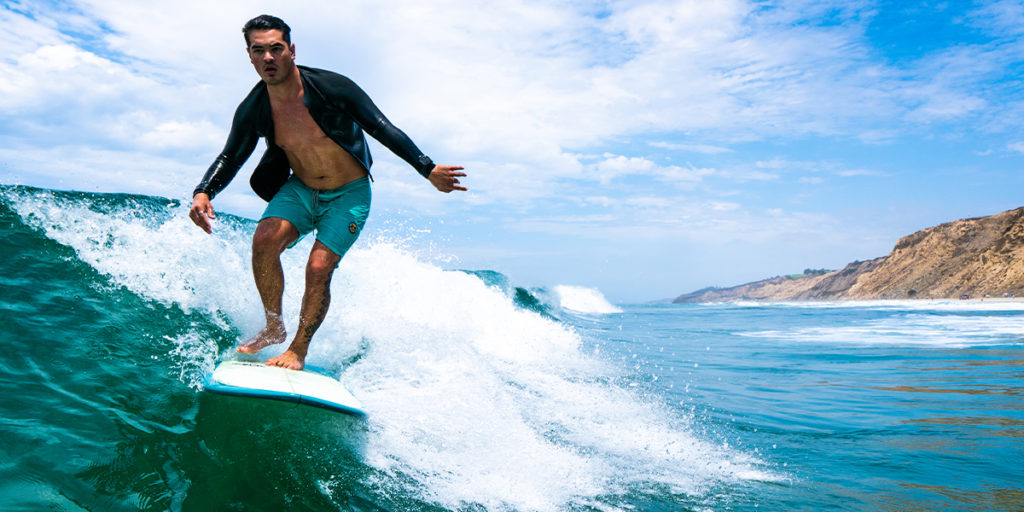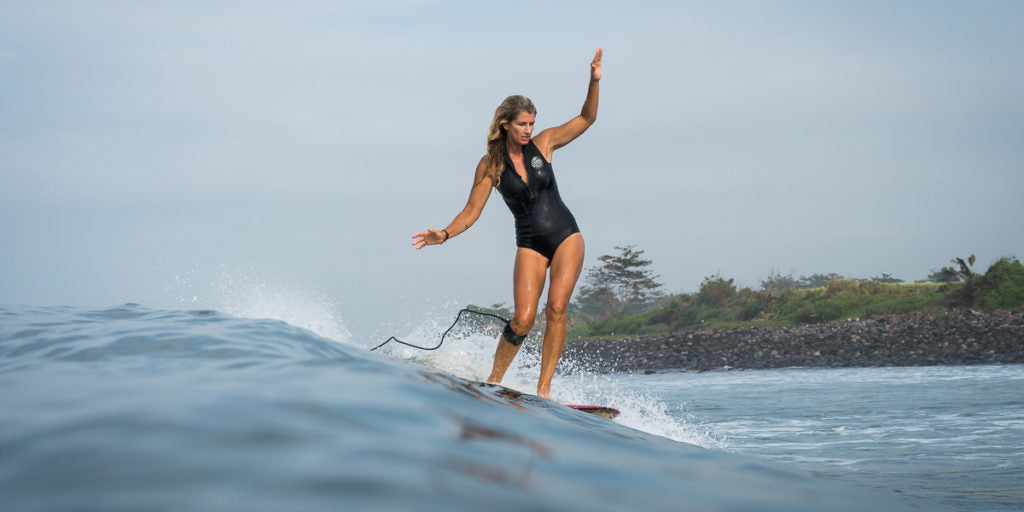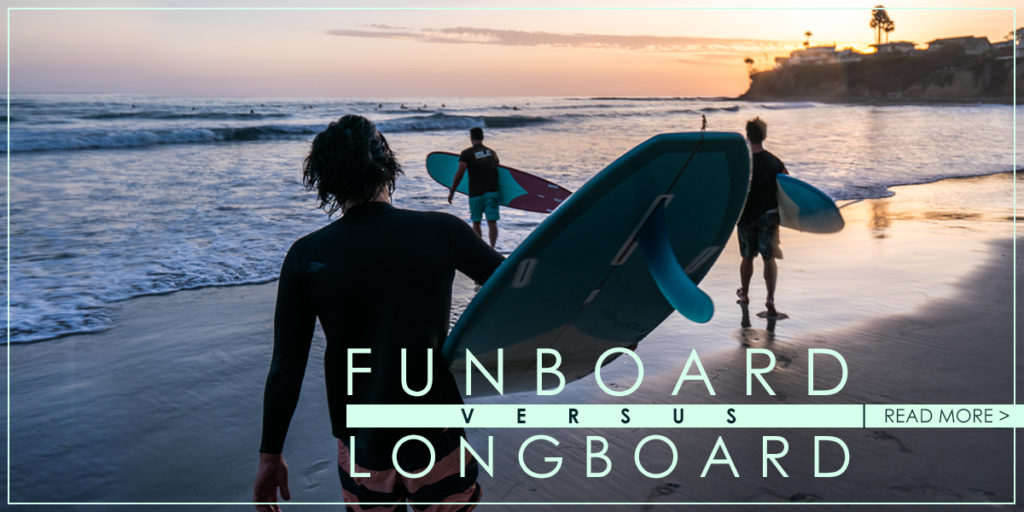



Posted on August 8, 2019 by Doug Robichaud
Although there are several types of surfboards, it is important to choose one that's perfect for your style and experience. Whether you’re a beginner who wants to learn to surf on a soft top surfboard or an experienced surfer who wants something new that will work better when you paddle out in small waves, a longboard surfboard will not disappoint. Today, I’m going to discuss the ideal longboard size for beginners and experienced surfers. I will also cover the ideal surf conditions to riding a longboard and how much they cost.

There are several reasons why beginner surfers should get a longboard while choosing a surfboard. Longboard surfboards are super stable, easy to ride and maneuverable. They will help you learn the basic surfing techniques and perfect your stance much faster than any other surfboard design. In addition, longboard s
I’m assuming your quiver is stacked with shorter boards.
Let’s be honest -- big swells don’t happen as often as you’d like. If you’re always waiting for the next big swell to surf, a longboard will allow you to enjoy surfing when the waves are small. The number one reason why experienced surfers should add a longboard to their quiver is that they will allow you to get out in the water and surf more frequently.
Remember this rule of thumb: longboards are not just for young kooks and old folks. There are so many amazing surfers who rip on longboards and can perform advanced techniques like hanging ten, ripping turns, riding switch stance, and getting shacked. Think of this as a new challenge, and if you’re feeling under the weather on your shortboarding lately, longboarding will rekindle your love for surfing again.

As a beginner surfer, your goal is to find a longboard that makes paddling and catching waves smooth and easy. To successfully do this, you need to pay close attention to a longboard surfboard’s dimensions -- most specifically, the length and width.
Your beginner longboard surfboard should be around 9’4” for the length and 23” for the width. If you’re a bigger surfer, you can go up to 23 ½ inches wide. If you’re a smaller surfer, you can go down to 22 ½ inches wide. Furthermore, your beginner longboard should be around 15-17 pounds in weight.
Take this advice to your local surf shop and an employee will be able to show you their best longboard for beginners. Also, if you have a contact with local shapers, they will be a huge help in pointing you in the right direction and might be able to come up with some super rad longboard shapes for you.

The biggest mistake experienced surfers make when transitioning from a shortboard to a longboard is getting one that’s too small (9’0” or 9’2”). A small longboard will not make the transition easier. Even though a shorter longboard will still feel like a lot more foam than your shortboard, it won’t really give you the true feeling of gliding down the line on a longboard.
Remember that one of the biggest reasons you’re adding a bigger board to your quiver is to have more fun surfing small waves, which means riding a longer and heavier longboard.
A good length to start out with is 9’6”, but I would recommend going even longer like 9’8” or 9 '10". A bigger longboard will give you that glide you need to cover a lot of water easily. And if you’re interested in learning harder or more advanced longboard techniques like the cross-step, hanging ten, and ripping turns, you can still do all of those maneuvers with a longer surfboard.
A longboard surfboard will work best in 1-2 foot and 2-3 foot waves. In popular surf destinations like California and Hawaii, a longboard will be a great choice to ride when there are lulls between bigger swells. For more seasonal surf destinations, like on the East Coast, a longboard is a must-have during the inconsistent summer months.

Since longboards are so much bigger than shortboards, they tend to cost more. If you’re a beginner surfer looking for your first longboard, it would be smart to buy used. A brand new, custom-made $1,000 longboard will damage just as easily as the $400 used longboard you scored at your local shop. Most local surf shops will have a rack of used boards. Call ahead and see if they have any longboards for under $500. If you can find something new in the $650-$750 range, go for it!
Key Takeaway: Beginner surfers should pay under $500 for a used longboard or around $750 for a new one.
I’m sure you already have a good idea about how much a new longboard will cost. If you’re worried about breaking the bank on a shiny new longboard, keep in mind that a new $1,000 longboard will last for a long time unless you royally damage it. A realistic price for a quality shaped and glassed longboard will cost you around $700 to $1,300. They are a bit pricey, but this tier of longboards offers exceptional durability because they are double-glassed and can handle a beating.
Key Takeaway: Experienced surfers should pay around $700 to $1,300 for a new longboard. However, you can reach out to local shapers to score a better deal.

The name pretty much says it all. A nose rider is the type of longboard surfboard that’s great for walking the nose, noseriding, and gliding -- classic surfing style. It’s the type of board that’s perfect for these stylish maneuvers because it’s packed with volume, has rounded rails down to its tail, and a wider nose. Noseriders are the type of longboard that all beginners should ride. If you live near slow and soft breaking waves, similar to San Onofre, a nose rider will work wonders for you.
Qualities Of A Noserider:

High-performance longboard surfboards are the exact opposite of noseriders. These longboards allow you to catch a wave like you're on a shortboard. Compared to noseriders, high-performance longboards have much less volume, a narrower outline, more rocker, and usually feature a 2+1 or quad-fin setup with a variety of surfboard tail shapes.
High-performance longboard surfboards work best in steeper and faster waves due to the fact that they have narrower noses and more rocker. These longboards are not ideal for beginners because the learning curve is much more difficult due to the higher speeds. You will find that the older, more experienced surfers will ride high-performance longboards to replace the shortboards they can no longer ride effectively.
Qualities Of A High-Performance Longboard:
"So, what size surfboard should I get?"
Longboard surfboards are a great option to have in your quiver; they work great in small and mushy waves, ensuring a fun time no matter what. Beginner surfers should get a longboard surfboard that is 9’4” long and around 23 inches wide. Experienced surfers transitioning from a shortboard should ride longboards that are at least 9’6” long and 22 inches wide.

For over 21 years, ISLE's mission has remained the same - to inspire & equip for a life that's Better in Balance™ through adventure on the water.
We are the trusted leaders in inflatable paddle boards, dedicated to innovating and redefining what paddle boards can do.
Every ISLE product is covered by an industry-leading 2-year or 5-year warranty against defects in workmanship and materials for your peace of mind.
Orders ship the same or next day, and we offer package protection for added peace of mind.
We offer a 60-day trial period from the date of purchase to make sure you love your new gear.
SIGN UP FOR OUR NEWSLETTER
Sign up for our emails and be the first to know about exclusive deals, limited time offers, and big savings as soon as they drop.
Copyright © 2026 Paddle Boards and Surfboards By ISLE Surf & SUP. All Rights Reserved